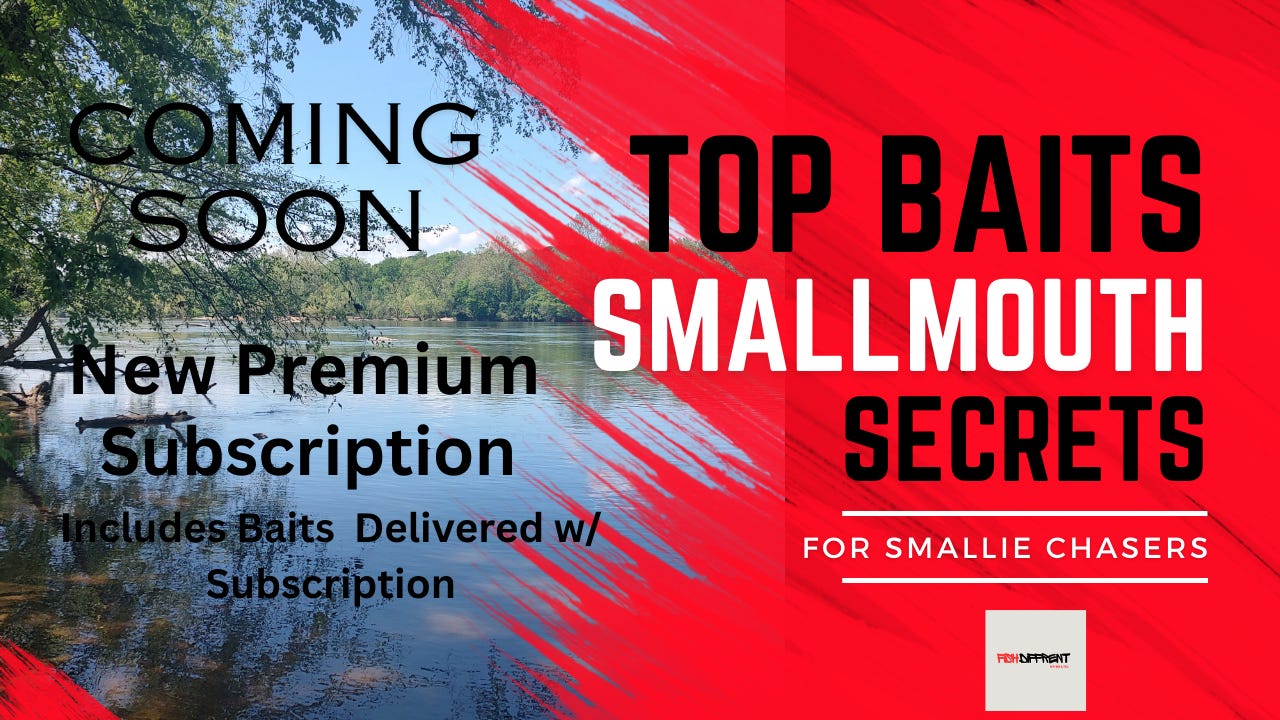How Can Fish Stocking Negatively Impact Native Wild Smallmouth Populations?
Should Smallmouth Stocking Efforts Cease?
No matter where you may fish in the country and regardless if its Black Bass, Trout or Salmon you can bet there are always questions concerning the fish stocking. In many instances stocking programs are a direct result of attempting to remedy consequences that have happened as a direct result of decisions made by man.
🐟What will happen with Smallmouth density now?
✨What will happen with changes in stocking programs?
🎣What are the negative impacts of stocking programs?
Consequences could simply be from the impact of daming river systems or introducing fish species non native into river systems to offset declining populations of native specie.
In the Mid Atlantic calls for stocking of Smallmouth increased after repeated high water or flooding events that many feared decimated fisheries or back in the 80’s when “acid rain” was a concern or results of “fish kills” directly related to man made causes.
Smallmouth although certainly not native to most areas in our region but thriving in multiple river systems today face more and more issues and in typical government fashion resources are often dedicated to sustaining fish species.
In Virginia, 30% of all financial resources of the Virginia Department of Wildlife Resources at times has been directed to the hatchery side of budgeting. Virginia now has been focusing on Smallmouth down in Front Royal, Virginia in terms of hatchery operations.
“However, overall numbers are below average frustrating both biologists and anglers alike. Unfortunately, we continue to experience poor spawning success within the North Fork which is causing a lag in the population’s recovery. In 2018 the North Fork Shenandoah experienced long-term record flooding which appears to have had a negative impact on the fish community. The population continues to struggle to recover from this event. During the spring biologists and hatchery staff raised fingerling smallmouth bass at the Front Royal Fish Cultural Station. This effort is part of a long-term smallmouth bass stocking project. Fortunately, the hatchery produced more fish than what was required for the study. A surplus of 1,554 fingerlings were stocked into the North Fork Shenandoah as a result. The fish were spread out within the Deer Rapids to Strasburg Park area at several sites. Each bass was marked using oxytetracycline to help biologists determine the percentage of stocked fish that recruit to the population. Hopefully survival will be high and assist with the recovery of this section of river.” (Va DWR Non Tidal Rivers Fishery Forecast 2024)
In term of the South Fork Shenandoah where many anglers often have considered the stem with the higher population densities of Smallmouth the “effort is part of a long-term smallmouth bass stocking project. A 16 km study site was selected ranging from Newport dam to the Whitehouse boat landing. 6,700 fingerling smallmouth were stocked and spread between 6 sites. Each bass was marked using oxytetracycline to help biologists determine the percentage of stocked fish that recruit to the population. Hopefully survival will be high and help bolster the poor year class experienced in 2023.” (Va DWR Non Tidal Rivers Fishery Report 2024)
Maryland has just concluded its stocking efforts on the Upper Potomac River after quite a few years of stocking the river post the major flood stage event of 2018.
Maryland Smallmouth Distribution:
Smallmouth are widespread despite not being native to Maryland waters.
They were first introduced in 1854 when a B&O Railroad employee transported approximately 20 fish from the Wheeling River in West Virginia to the C&O Canal Basin in Cumberland, Maryland.
Today they are found throughout the non-tidal Potomac and Susquehanna river watersheds and are common in most of our larger freshwater impoundments.
Fish stocking, the practice of releasing hatchery-raised fish into natural water bodies, is commonly used to enhance recreational fishing opportunities and restore fish populations. However, this practice can have several negative impacts on native wild fish species in river systems, affecting their mortality rates and overall population density. Here are the key ways in which fish stocking can negatively impact native fish populations:
Negative Impacts of Fish Stocking
Genetic Pollution:
Hybridization: Stocked fish can interbreed with native fish, leading to hybridization. This can dilute the genetic diversity of the wild population, reducing their ability to adapt to environmental changes and making them more susceptible to diseases.
Loss of Local Adaptations: Native fish populations are often adapted to specific environmental conditions. The introduction of non-native genes can disrupt these adaptations, making the hybrid offspring less suited to survive in the local habitat.
Competition for Resources:
Food: Stocked fish often compete with native species for food resources. This competition can lead to reduced growth rates and poorer health for native fish.
Habitat: Stocked fish may also compete for habitat, displacing native fish from their preferred areas and potentially exposing them to higher predation risk or less optimal living conditions.
Predation:
Direct Predation: Stocked fish can prey on native fish species, especially if the stocked fish are larger or more aggressive. This predation can significantly reduce the populations of smaller or juvenile native fish.
Predation Pressure: Increased predation pressure from stocked fish can lead to higher mortality rates in native fish populations.
Disease and Parasites:
Disease Introduction: Hatchery-raised fish can carry diseases and parasites not present in the native fish population. The introduction of these pathogens can lead to outbreaks that native fish may not have immunity to, resulting in high mortality rates.
Spread of Parasites: Stocked fish can also be vectors for parasites, which can infest native fish and further stress the population.
Behavioral Changes:
Aggressive Behavior: Stocked fish might exhibit more aggressive behavior than their wild counterparts, disrupting the social structure of native fish populations and leading to increased stress and mortality.
Altered Foraging Patterns: The presence of stocked fish can alter the foraging patterns of native fish, forcing them to expend more energy to find food or move to less suitable habitats.
Impact on Overall Wild Species Mortality and Population Density
Increased Mortality Rates:
The combined effects of competition, predation, and disease can lead to higher mortality rates among native fish species. This increased mortality can be especially detrimental to species that are already vulnerable or have small population sizes.
Reduced Population Density:
As mortality rates increase and reproductive success decreases due to genetic pollution and competition, the overall population density of native fish species can decline. This reduction in population density can lead to further challenges, such as reduced genetic diversity and lower resilience to environmental changes.
Ecosystem Imbalances:
Changes in the population dynamics of native fish can have cascading effects on the entire ecosystem. For example, if a native fish species declines significantly, it can affect the populations of species that prey on it or rely on it for controlling their populations (e.g., certain invertebrates or plants).
Long-Term Population Declines:
Over time, the negative impacts of fish stocking can lead to long-term declines in native fish populations. This decline can be difficult to reverse, especially if the genetic integrity of the population has been compromised.
Mitigating the Negative Impacts
To mitigate the negative impacts of fish stocking, several practices can be adopted:
Selective Stocking:
Use only native species for stocking, and ensure that they are genetically similar to the wild populations.
Health Screening:
Screen hatchery-raised fish for diseases and parasites before release.
Stocking Limits:
Limit the number and frequency of stocking events to reduce competition and predation pressures.
Habitat Restoration:
Focus on restoring and enhancing natural habitats to support wild fish populations, reducing the need for stocking.
In conclusion….
Fish stocking in river systems can negatively impact native wild fish species through genetic pollution, competition, predation, disease introduction, and behavioral changes. These impacts can lead to increased mortality rates and reduced population density among native fish, ultimately causing long-term declines in their populations. Careful management and mitigation practices are essential to minimize these negative effects and support the health and resilience of native fish populations.
Maryland has halted stocking efforts with the health of the Smallmouth population density in places like the Upper Potomac now but the question remains whether stocking efforts are effective as of yet in Virginia for Smallmouth. These fforts in Virginia may be in anticipation of an mass influx of rapid spawning rates of the Alabama Bass or other Spotted Bass that is beginning to show up in many rover systems like Staunton and New River.
“Consistent numbers of smallmouth over 16 inches have existed in the Staunton for the last 15 years so anglers still have great opportunities to catch quality fish in this stretch of river. Growth rates of Smallmouth Bass are above average, and survival is good which helps the Staunton River be a consistent producer of quality-size smallmouth. The Staunton has excellent Smallmouth Bass habitat in the reach above Brookneal; anglers new to the river should concentrate on the abundant rocky habitat as well as submerged trees extending from the riverbank. The river also holds several Kentucky Spotted Bass and the chance to catch a spot over 12 inches is very good; especially in the lower river below Brookneal.” (VaDWR Non Tidal River Fisheries Report 2024)
If you enjoy this content please be sure to SUBSCRIBE to our FREE NEWSLETTER but of you are interested in greater access and our bait delivery program each month than be sure to SUBSCRIBE to our Premium Level in late summer so you can have access to a ton more content and fishing for Smallmouth information throughout our region.
Subscribe TODAY for FREE and then this summer JOIN the Premium Newsletter which will not only provide more in depth analysis but also locations for quality Smallmouth fishing and how to target them with the right bait presentations while also DELIVERING (1) BAIT per month to SUBSCRIBERS right to their door to fish with on their next river trip!!
Resources:
Facebook Groups:
Smallmouth Army:
https://www.facebook.com/groups/1322144201945490
Smallie Chaser River Bassin:
https://www.facebook.com/groups/885248796934955




